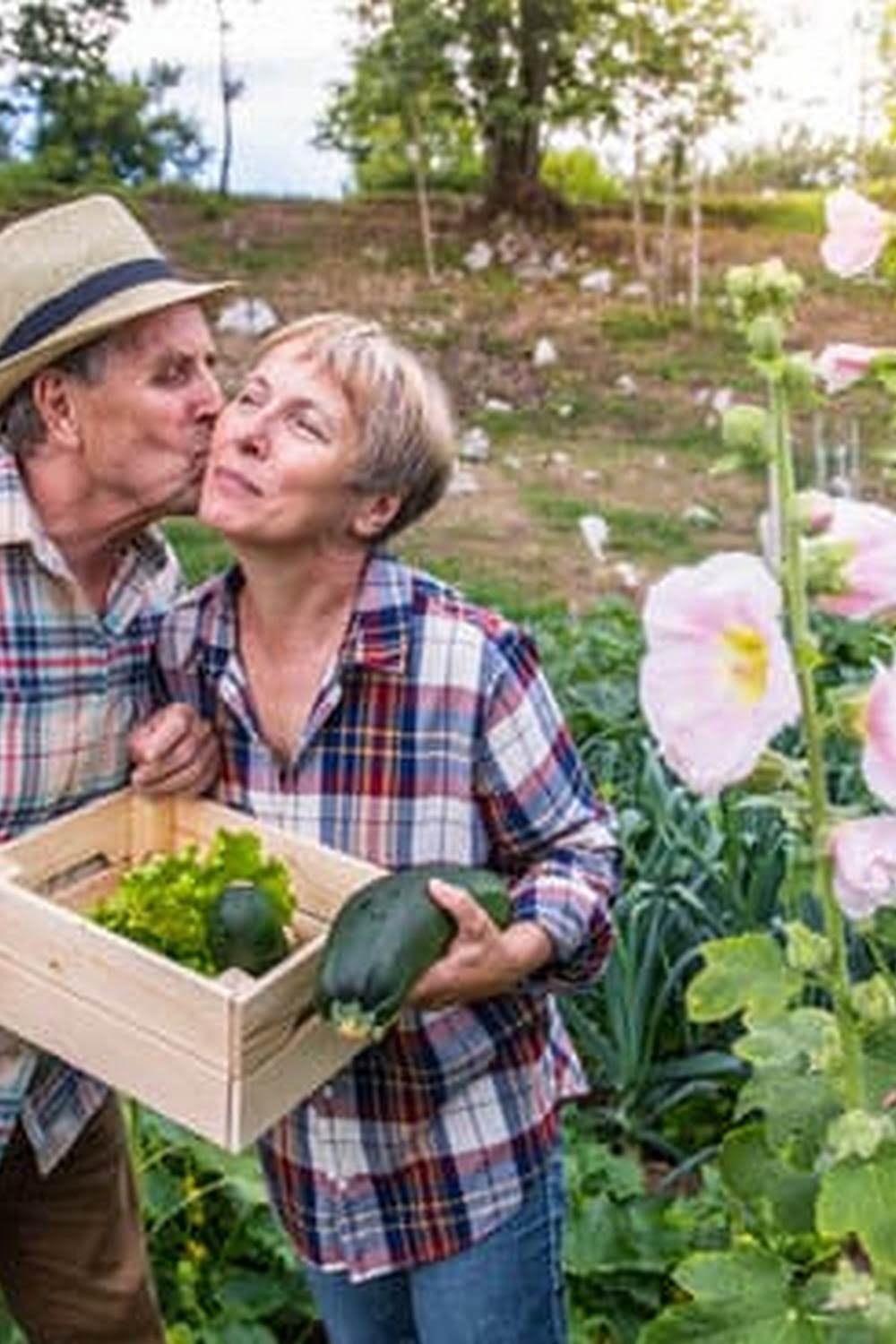Watering vegetable gardens is a crucial aspect of maintaining a bountiful and healthy crop. Proper watering ensures that your vegetable plants receive the necessary hydration to thrive, but it also involves understanding the specific water needs of different plant varieties. In this article, we will delve into the importance of proper watering for vegetable gardens, and offer valuable insights into the best practices, common mistakes to avoid, and tips for conserving water while tending to your garden.
Understanding the water needs of different vegetable plants is essential for successful gardening. Some vegetables require more frequent watering due to their shallow root systems, while others are more drought-resistant. Recognizing these differences can help prevent both overwatering and underwatering, which can be detrimental to the health of your plants.
Overwatering and underwatering are common issues in vegetable gardens, and being able to identify the signs of these problems is crucial for maintaining a thriving garden. From wilting leaves and yellowing foliage to mold growth and stunted growth, recognizing these symptoms can guide your watering practices and ensure optimal plant health.
In addition to addressing the importance of proper watering for vegetable gardens, we will explore different methods of watering such as drip irrigation, soaker hoses, hand watering, as well as provide a seasonal watering guide and tips for conserving water. Understanding the impact of climate and soil on your garden’s water needs will ultimately contribute to a successful harvest. By implementing best practices and avoiding common mistakes, you can ensure that your vegetable garden thrives throughout the growing season.
Understanding the Water Needs of Different Vegetable Plants
Water Needs of Leafy Greens
Leafy greens such as lettuce, spinach, and kale have shallow root systems and require consistent moisture to thrive. They are more susceptible to wilting and bolting (premature flowering) if not watered adequately. It is important to keep the soil consistently moist but not waterlogged for these plants.
Water Needs of Root Vegetables
Root vegetables like carrots, radishes, and beets require regular watering to promote proper root development. However, it is essential to strike a balance as overwatering can lead to rotting of the roots. These vegetables benefit from deep, infrequent watering to encourage deep root growth.
Water Needs of Fruit-Bearing Vegetables
Tomatoes, peppers, cucumbers, and other fruit-bearing vegetables have higher water needs, especially during the fruiting stage. Insufficient watering can lead to blossom end rot and reduced fruit production. It is crucial to monitor the soil moisture consistently and provide adequate hydration during hot weather.
Understanding the specific water needs of different vegetable plants is crucial for successful gardening. By tailoring the watering practices according to the requirements of each type of vegetable, gardeners can ensure healthy growth and abundant harvests.
By understanding the unique water needs of various vegetable plants, gardeners can effectively address their watering requirements while promoting optimal growth and productivity. Whether it’s leafy greens, root vegetables, or fruit-bearing plants, providing the right amount of water is key in nurturing a thriving vegetable garden.
Signs of Overwatering and Underwatering in Vegetable Gardens
Recognizing Signs of Overwatering
One of the most common signs of overwatering in vegetable gardens is the presence of waterlogged soil. If the soil feels consistently wet or if there are pools of water forming on the surface, it’s likely that you are overwatering your plants.
Another indicator is the yellowing and wilting of leaves, as well as stunted growth. The development of mold or mildew on the surface of the soil can also be a signal that your vegetables are receiving too much water.
Identifying Signs of Underwatering
On the other hand, underwatering can lead to different symptoms in vegetable plants. The most obvious sign is when the soil is dry and crumbly to the touch. Vegetables may also develop brown or crispy edges on their leaves, as well as a wilted appearance. In severe cases, you may notice that certain plants start dropping flowers and fruits prematurely in an attempt to conserve water.
Responding to Signs of Overwatering and Underwatering
When signs of overwatering or underwatering become apparent, it’s important to take action promptly. For overwatered plants, consider adjusting your watering schedule by allowing more time for the soil to dry out between watering sessions. You could also improve drainage by adding organic matter to your soil mix. For underwatered vegetables, increase the frequency and depth of your watering sessions while being careful not to drown them with excessive amounts of water at once.
By paying close attention to these signs and taking appropriate measures, you can ensure that your vegetable garden receives just the right amount of moisture for healthy growth and abundant harvests.
Best Practices for Watering Vegetable Gardens
Proper watering is crucial for the health and success of vegetable gardens. Without adequate water, plants can become stressed, wilt, and produce lower yields. On the other hand, overwatering can lead to root rot and other diseases. Understanding the specific water needs of different vegetable plants is essential for ensuring they thrive.
When it comes to watering vegetable gardens, there are several best practices to keep in mind:
- Water deeply and infrequently: It’s better to give your vegetable garden a good soak once or twice a week rather than frequent shallow waterings. This encourages deep root growth and helps plants become more resilient to drought.
- Water at the base of plants: Direct water at the soil around the base of each plant rather than overhead. This helps prevent disease and ensures that the roots receive adequate moisture.
- Water in the morning: It’s best to water your vegetable garden in the morning when temperatures are cooler. This reduces evaporation loss and gives plants a chance to dry off during the day, which can help prevent disease.
In addition to these best practices, it is important to consider seasonal variations in watering needs. For example, during hot summer months, more frequent watering may be necessary, while in cooler months, less water may be needed.
Ultimately, proper watering is not only essential for healthy plants but also for conserving water resources. By following best practices and being mindful of seasonal changes, you can ensure that your vegetable garden thrives while using water efficiently.
Different Methods of Watering Vegetable Gardens (Drip Irrigation, Soaker Hoses, Hand Watering, Etc)
Proper watering is crucial for the health and success of vegetable gardens. Different methods of watering can be used to ensure that your vegetable plants receive the right amount of water they need to thrive. The key is to understand the water needs of different vegetable plants and to use the most effective method for your specific garden.
Drip irrigation is a popular method for watering vegetable gardens as it delivers small, consistent amounts of water directly to the roots of the plants. This method helps reduce water waste and prevents moisture-related diseases by keeping foliage dry.
Soaker hoses are another efficient way to water vegetable gardens, delivering water slowly and evenly along their length. Hand watering, although more labor-intensive, allows for precise control over where the water goes and can be beneficial for smaller garden spaces.
In addition to these methods, there are other options such as sprinklers and automatic irrigation systems. Each method has its own advantages and considerations based on factors like garden size, plant types, climate, and resources such as time and money. Overall, choosing the best method for watering your vegetable garden will depend on these factors and your personal preferences.
| Watering Method | Advantages | Considerations |
|---|---|---|
| Drip Irrigation | Conserves water, prevents foliage diseases | Initial setup cost |
| Soaker Hoses | Delivers water evenly | May be prone to clogging |
| Hand Watering | Precise control over watering |
It is important to consider not only the benefits but also any potential drawbacks before choosing a method for watering your vegetable garden. Experimenting with different methods may also help you find the most effective approach for your specific garden’s needs while conserving water resources.
Tips for Conserving Water While Watering Vegetable Gardens
Are you looking for ways to conserve water while watering your vegetable garden? Here are some tips to help you do just that:
1. Use a drip irrigation system: Drip irrigation delivers water directly to the roots of plants, minimizing evaporation and waste. This method is also more efficient than overhead watering, as it reduces the risk of water being lost to runoff.
2. Mulch your garden beds: Applying a layer of mulch around your vegetable plants helps to retain soil moisture by preventing evaporation. It also suppresses weed growth, which can compete with your vegetables for water.
3. Water during the cooler parts of the day: By watering your vegetable garden in the early morning or late afternoon, you can reduce water loss due to evaporation. Avoid watering during the hottest part of the day when evaporation rates are highest.
4. Collect rainwater: Set up a rain barrel or cistern to capture rainwater from your roof. This free source of water can then be used to irrigate your vegetable garden during dry periods, reducing the need for tap water.
5. Group plants with similar water needs: By grouping together vegetables that have similar water requirements, you can avoid overwatering some plants while underwatering others. This ensures that each plant receives the right amount of water, conserving this precious resource.
These simple tips can help you conserve water while ensuring that your vegetable garden gets the hydration it needs for healthy growth and bountiful harvests. By implementing these measures, you can become a more environmentally conscious gardener and save money on your water bill at the same time.
Seasonal Watering Guide for Vegetable Gardens
Proper watering is essential for the success of any vegetable garden. The amount and frequency of watering required by the plants vary depending on the season. During the hotter months, such as summer, vegetable plants will need more water to thrive, while during cooler seasons like spring and fall, they may require less frequent watering. Understanding the seasonal watering needs of your vegetable garden is crucial for healthy plant growth and a bountiful harvest.
In the summer months, when temperatures are high and moisture evaporates quickly, it is important to water your vegetable garden deeply and consistently. Aim to water in the early morning or evening to minimize water loss through evaporation. Be mindful of signs of heat stress in your plants, such as wilting or yellowing leaves, as this may indicate that they need more water.
During spring and fall, when temperatures are milder, you may not need to water your vegetable garden as frequently. Keep an eye on soil moisture levels and adjust your watering schedule accordingly. Additionally, consider using mulch to help retain soil moisture and reduce the frequency of watering during these seasons.
In colder climates, winter watering is often overlooked but can be crucial for certain vegetables that may still be growing or overwintering in the garden. While these plants may not need as much water as during the warmer months, it is important to monitor soil moisture levels and provide supplemental watering when necessary to prevent dehydration.
| Season | Watering Recommendations |
|---|---|
| Summer | Deep and consistent watering in the early morning or evening; watch for signs of heat stress in plants |
| Spring/Fall | Adjust watering frequency based on soil moisture levels; use mulch to retain moisture |
| Winter | Monitor soil moisture levels; provide supplemental watering when necessary |
Common Watering Mistakes to Avoid When Tending to Vegetable Gardens
When it comes to watering vegetable gardens, there are some common mistakes that gardeners often make. These mistakes can have a significant impact on the health and productivity of the plants. One of the most common mistakes is overwatering.
Many gardeners believe that more water is always better, but this is not the case. Overwatering can lead to water-logged soil, which can suffocate the roots of the plants and lead to root rot. It can also leach important nutrients out of the soil, making it less hospitable for plant growth.
On the other hand, underwatering is another common mistake that can negatively affect vegetable gardens. When plants do not receive enough water, they may wilt, become stunted, or produce lower quality fruits and vegetables. It’s important for gardeners to understand the specific water needs of different types of vegetables in order to avoid both overwatering and underwatering.
Another mistake gardeners often make is watering at the wrong time of day. Watering during the hottest part of the day can result in much of the water evaporating before it even reaches the plants’ roots.
On the other hand, watering late in the evening can create conditions that are ideal for fungal diseases to develop. The best time to water vegetable gardens is early in the morning when temperatures are cooler and there is less wind, allowing for better absorption by the plants.
By being aware of these common watering mistakes and taking measures to avoid them, gardeners can ensure that their vegetable gardens thrive and produce healthy and abundant crops throughout the growing season.
The Impact of Climate and Soil on Watering Vegetable Gardens
In conclusion, proper watering is essential for the success of vegetable gardens. Understanding the specific water needs of different vegetable plants is crucial in ensuring that they receive the right amount of moisture to thrive. Signs of overwatering and underwatering should be closely monitored to prevent any potential damage to the plants.
Implementing best practices and different methods of watering, such as drip irrigation or soaker hoses, can help ensure that vegetable gardens are adequately watered while also conserving water. Additionally, following a seasonal watering guide can provide valuable guidance on when and how much to water the garden throughout the year.
It is important to be mindful of common watering mistakes and to avoid them when tending to vegetable gardens. Climate and soil conditions play a significant role in determining the watering needs of a garden, and it is important to take these factors into account when developing a watering routine.
Overall, by paying close attention to the specific needs of each plant, implementing best practices for watering, and being mindful of environmental factors such as climate and soil, vegetable gardeners can ensure that their gardens remain healthy, productive, and properly hydrated throughout the growing season.
Frequently Asked Questions
Is It OK to Water a Vegetable Garden Every Day?
It is not necessary to water a vegetable garden every day, as this can lead to overwatering and root rot. The frequency of watering will depend on factors like weather, soil type, and the specific needs of the vegetables being grown.
What Is the Best Way to Water Vegetables?
The best way to water vegetables is to do so deeply but infrequently. This means allowing the water to penetrate deeply into the soil, encouraging strong root growth. Drip irrigation or soaker hoses are often recommended for delivering water directly to the base of plants.
How Long Should I Run My Sprinklers on My Vegetable Garden?
The duration for which sprinklers should run on a vegetable garden will also vary based on factors such as climate and soil type. As a general guideline, it is recommended to water for about 1 inch per week, either through rainfall or supplemental irrigation. Monitoring the soil moisture and adjusting watering times accordingly is crucial for maintaining healthy plants.

If you’re looking to get into vegetable gardening, or are just looking for some tips on how to make your current garden better, then you’ve come to the right place! My name is Ethel and I have been gardening for years. In this blog, I’m going to share with you some of my best tips on how to create a successful vegetable garden.





